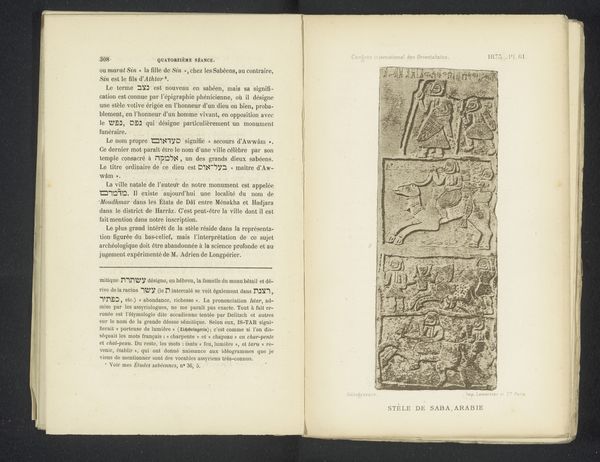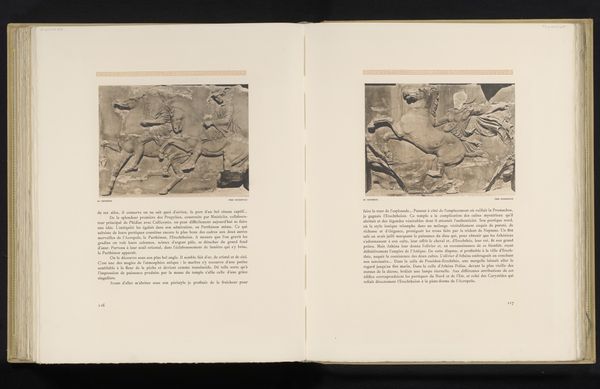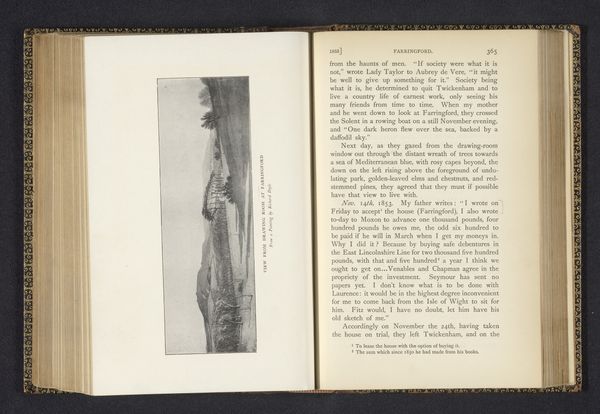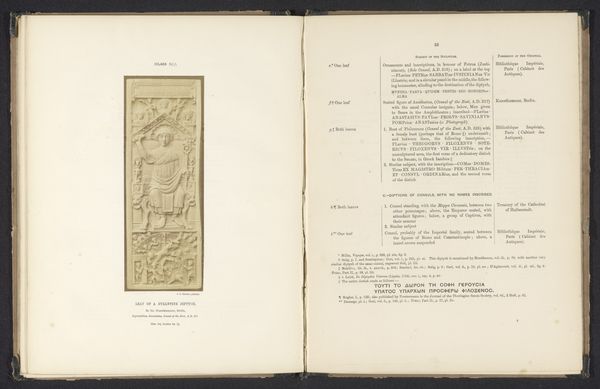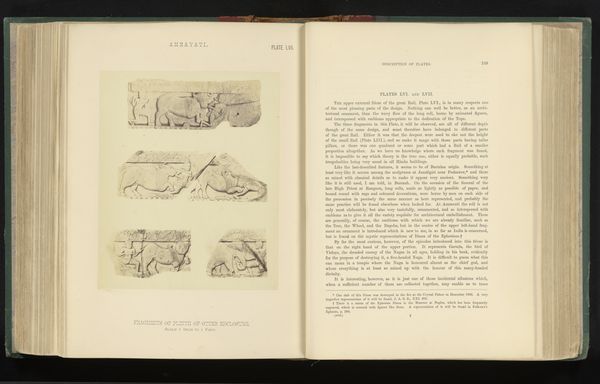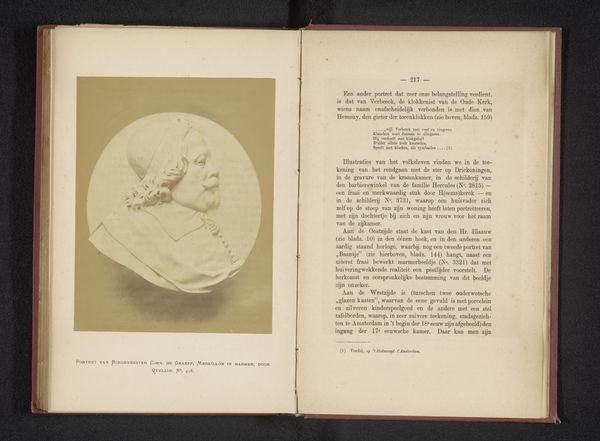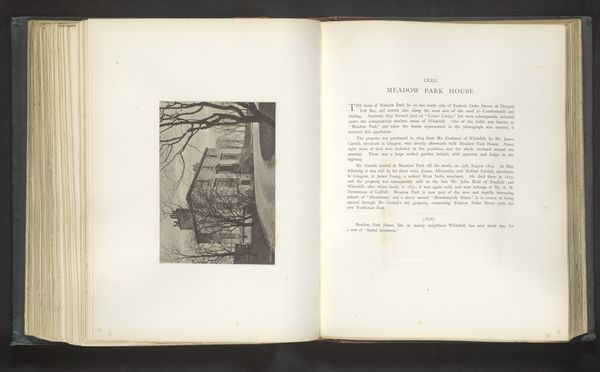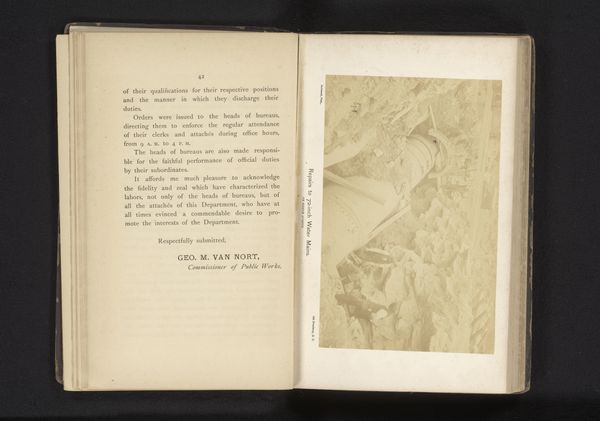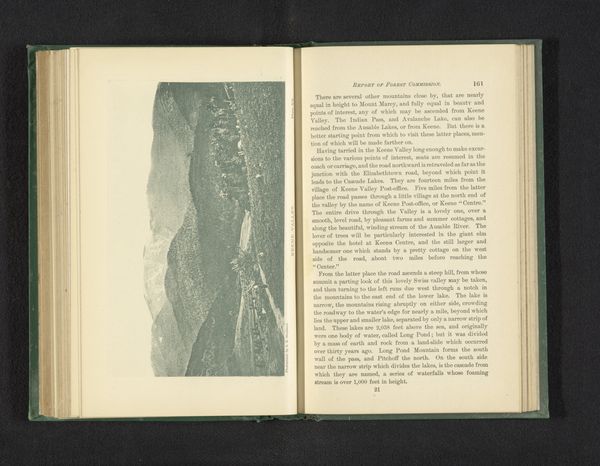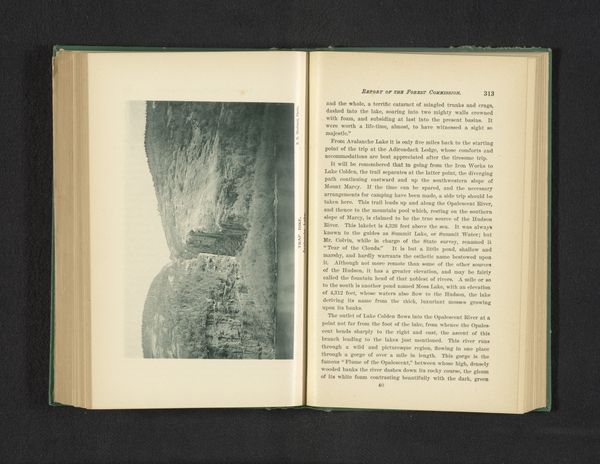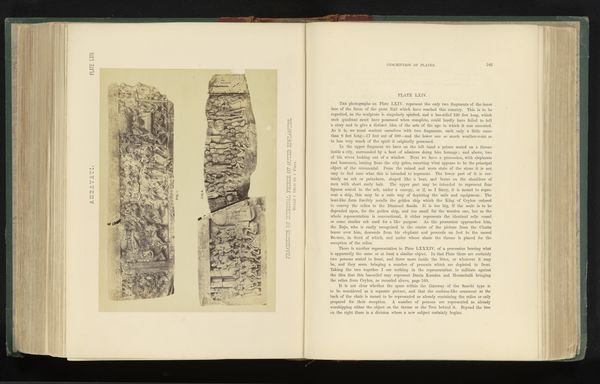
print, relief, photography
#
narrative-art
# print
#
greek-and-roman-art
#
relief
#
photography
#
ancient-mediterranean
#
history-painting
Dimensions: height 131 mm, width 116 mm
Copyright: Rijks Museum: Open Domain
Curator: Here we have a reproduction of a relief titled "Apollo and Artemis, Relief in Sparta," dating from before 1886, of unknown origin. Editor: The photo shows this damaged stone or plaster-like slab and immediately gives me the impression of something fragmented, incomplete. What's left is fascinating. I wonder how it felt whole. Curator: It depicts, as the title indicates, Apollo with his lyre and Artemis. Being photographed within the pages of a journal speaks to the methods of accessing ancient art at that time. But what narrative can you tease out from the remaining relief? Editor: Right, this slice captures what seems to be a harmonious relationship—Apollo with his musical instrument and Artemis; figures from mythology that intersect with the very stone they are depicted upon, like deities in and outside of time. Curator: Precisely, they're together in this shared votive relief, which isn't entirely novel but has moments that reveal itself, for instance, an Omphalos, or a stone relic located in Delphi which is the symbolic center. Two eagles sit atop, symmetrically opposed on the very structure where Apollo and Artemis’ feet rests. The arrangement conveys an intended symbolism, I am sure. Editor: And the arrangement speaks volumes! These ancient cultures often used imagery to validate systems of power and faith. It urges a certain alignment, reinforcing existing norms through their visual and cultural representations. We see these images within books, and that, too, helps circulate an agenda. Curator: An astute point to make. Indeed, images travel and become evidence and proof, especially in print where the photograph becomes a proxy of evidence, like seeing the relief with one’s own eyes! Even though a photograph of the original gives you insight and information as well as contextual clues, what’s left to extract as critical spectators looking into it? Editor: Absolutely. It forces you to reconcile its aesthetic presentation within an era defined by imperialism and ethnocentrism. Viewing this now, its cultural presence provokes thinking about both the original artistic expression as well as the book in hand circulating imagery during a very complex socio-historical climate. Curator: Well, on my part I shall remain intrigued with thinking on how visual communication shaped both public thought and scholarship! Editor: Agreed! For me it reinforces that the story isn't just about these mythological characters but about power, perception, and historical representation itself.
Comments
No comments
Be the first to comment and join the conversation on the ultimate creative platform.
